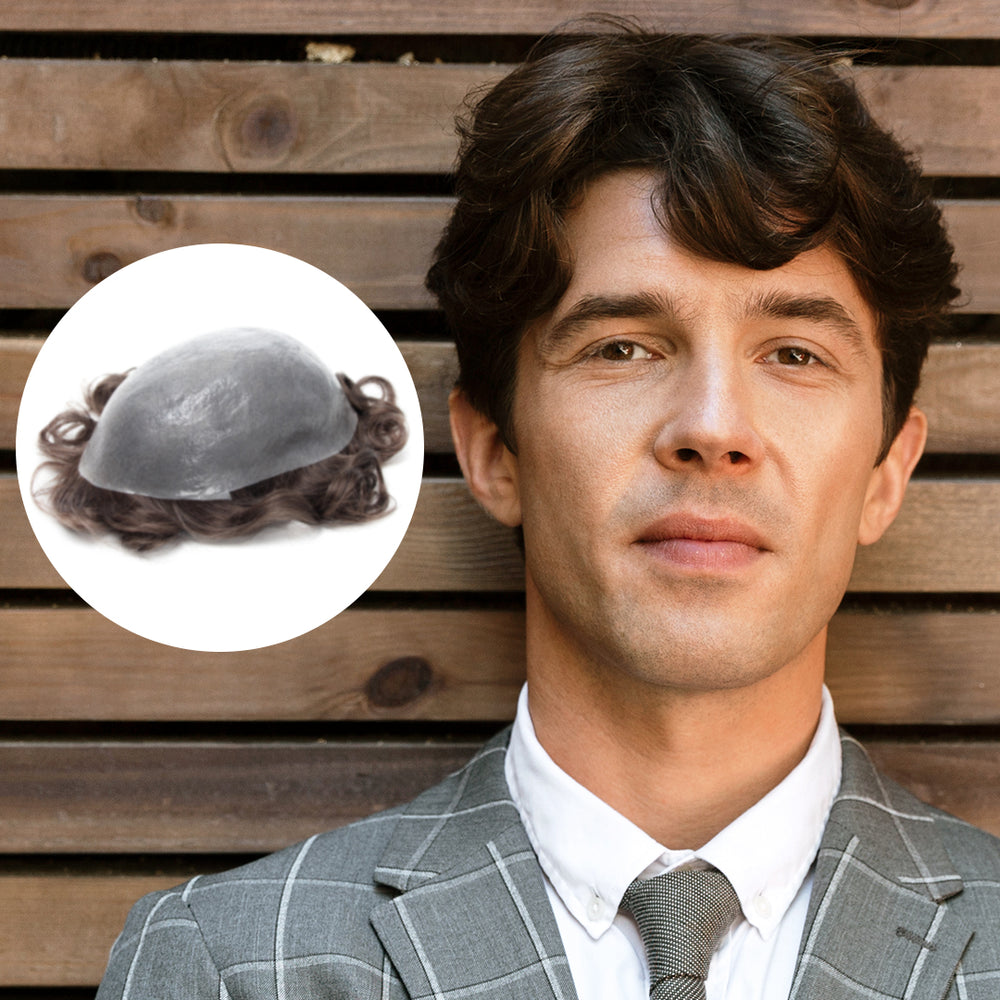Frank Sinatra With a Toupee?
Many people have issues with their hair, so hair toppers might just be the perfect solution for hair loss, hair thinning, baldness and hair patches. It's an essential need if you belong to the film industry. Hair Toupee is a helpful tool that is well-known to people nowadays.
It's a quick way to conceal hair thinning without helping hair stylishness. You can use them every day. Many television stars prefer to wear a toupee if anyone has hair thinning problems. So, this article will explain one of the most familiar personalities, why he uses a hair toupee, and how he confidently declares about this secret. 
Here we Below we will discuss Frank Sinatra:
Frank Sinatra was a legendary entertainer who died in May 1998 at the age of 82. It’s probably safe to say that when he did it his way, he did it while wearing a toupee.
1.Who is Frank Sinatra?
Francis Albert Sinatra (/sɪˈnɑːtrə/; December 12, 1915 – May 14, 1998) was an American singer and actor. Nicknamed the "Chairman of the Board", Sinatra is considered one of the most popular entertainers of the 1940s, 1950s and 1960s. He is among the world's best-selling music artists, having sold an estimated 150 million records.
Born to Italian immigrants in Hoboken, New Jersey, Sinatra was greatly influenced by the intimate, easy-listening vocal style of Bing Crosby and began his musical career in the swing era with bandleaders Harry James and Tommy Dorsey. He found success as a solo artist after signing with Columbia Records in 1943, becoming the idol of the "bobby soxers". Sinatra released his debut album, The Voice of Frank Sinatra, in 1946. However, by the early 1950s, his film career had stalled, so he turned to Las Vegas, where he became one of its best-known residency performers as part of the Rat Pack. His career was reborn in 1953 with the success of the film From Here to Eternity, which earned him an Academy Award and a Golden Globe Award for Best Supporting Actor. Sinatra then signed with Capitol Records and released several critically lauded albums, some of which are retrospectively noted as being among the first "concept albums", including In the Wee Small Hours (1955), Songs for Swingin' Lovers! (1956), Come Fly with Me (1958), Only the Lonely (1958), No One Cares (1959), and Nice 'n' Easy (1960).
Sinatra left Capitol in 1960 to start his own record label, Reprise Records, and released a string of successful albums. In 1965, he recorded the retrospective album September of My Years and starred in the Emmy-winning television special Frank Sinatra: A Man and His Music. After releasing Sinatra at the Sands, recorded at the Sands Hotel and Casino in Vegas with frequent collaborator Count Basie in early 1966, the following year he recorded one of his most famous collaborations with Tom Jobim, the album Francis Albert Sinatra & Antonio Carlos Jobim. It was followed by 1968's Francis A. & Edward K. with Duke Ellington. Sinatra retired for the first time in 1971, but came out of retirement two years later. He recorded several albums and resumed performing at Caesars Palace, and released "New York, New York" in 1980. Using his Las Vegas shows as a home base, he toured both within the United States and internationally until shortly before his death in 1998.
Sinatra forged a highly successful career as a film actor. After winning an Academy Award for From Here to Eternity, he starred in The Man with the Golden Arm (1955), and in The Manchurian Candidate (1962). Sinatra appeared in various musicals such as On the Town (1949), Guys and Dolls (1955), High Society (1956), and Pal Joey (1957), winning another Golden Globe for the lattermost. Toward the end of his career, he frequently played detectives, including the title character in Tony Rome (1967). Sinatra would later receive the Golden Globe Cecil B. DeMille Award in 1971. On television, The Frank Sinatra Show began on CBS in 1950, and he continued to make appearances on television throughout the 1950s and 1960s. Sinatra was also heavily involved with politics from the mid-1940s, and actively campaigned for presidents such as Franklin D. Roosevelt, Harry S. Truman, John F. Kennedy and Ronald Reagan. He was investigated by the FBI for his alleged relationship with the Mafia.

While Sinatra never learned how to read music, he worked very hard from a young age to improve his abilities in all aspects of music. A perfectionist, renowned for his dress sense and performing presence, he always insisted on recording live with his band. His bright blue eyes earned him the popular nickname "Ol' Blue Eyes". Sinatra led a colorful personal life, and was often involved in turbulent affairs with women, such as with his second wife Ava Gardner. He later married Mia Farrow in 1966 and Barbara Marx in 1976. Sinatra had several violent confrontations, usually with journalists he felt had crossed him, or work bosses with whom he had disagreements. He was honored at the Kennedy Center Honors in 1983, was awarded the Presidential Medal of Freedom by Ronald Reagan in 1985, and the Congressional Gold Medal in 1997. Sinatra was also the recipient of eleven Grammy Awards, including the Grammy Trustees Award, Grammy Legend Award and the Grammy Lifetime Achievement Award. He was included in Time magazine's compilation of the 20th century's 100 most influential people. After Sinatra's death, American music critic Robert Christgau called him "the greatest singer of the 20th century",and he continues to be seen as an iconic figure.
2.Does Frank Sinatra Wear A Toupee?
Yes, he openly admitted he wore a toupee for most of his life after his hair began thinning early in his career.
Why did Frank Sinatra Start Wearing a Toupee?
When Sinatra reached his 40s, he started to thin. Not so coincidentally, it was an exceptionally stressful time for him. He was a top singing star and film star. He faced difficulty getting prestigious concert gigs in large theatres like the Paramount.
After a breakup with television actress Ava Gardner and getting a divorce from his wife, The Box Office closed the contract with him. He again started with new radio and television series that were unsuccessful. He owed several hundred thousand dollars to the IRS in unpaid back taxes.
After all that, Frank Sinatra was very disturbed and thought about why he couldn't even sing. This tension and troubled timescape caused him to start to lose his hair. And after some time, he realised that being visibly balding. That's why Sinatra began wearing a hairpiece at that time.
He was careful about his Hairpiece and didn't allow himself to be photographed without a hat or wigtoupee. It's difficult to say how he got baldness and hair thinning issues, and significantly his hairline had merely receded. However, in 1965 time magazine Sinatra was photographed without a hat and towel and certainly looked like skin to me, and not hair.
According to frank friends, he had uncompromising standards about how he looked. He wore impeccable suits, kept strict hygiene routines, and ensured his hair stayed neat and ideally in position. As his hair started to thin, he began to wear a toupee. He had vast multiple colours and style variety of hairpieces at home, but he wanted to ensure he had extras on hand. He is very conscious about his hair accessories even though he hired a woman to carry his hairpieces around with her, hauling roughly 30 of his hairpieces in a bag, just in case. For this job, Sinatra paid a handsome amount.

3. What does Frank Sinatra like to do in his spare time?
Some media say that Frank Sinatra likes skiing, making Christmas stockings, etc. Some say that he especially likes flying children's kites, but we have not found any evidence for this.
4.Why did Frank Sinatra lose his voice?
Years of singing as many as 100 songs per day had taken its toll, and he lost his voice completely for several months in 1950 because of vocal-chord hemorrhaging.
5.How much money did Frank Sinatra have at his death?
In the late 80s, during a period of decline, Sinatra's accountants calculated his net worth to be $14 million– a surprisingly small number. However, after his death in the late 90s, his family began fighting over a will that was worth somewhere between $200 million and $600 million.

Source:Wikipedia:https://en.wikipedia.org/wiki/Frank_Sinatra
JEKOSEN:DOES RYAN SEACREST WEAR A TOUPEE?
https://jekosenkites.com/collections/kids-kite
Spotify:https://open.spotify.com/artist/1Mxqyy3pSjf8kZZL4QVxS0
Imdb:https://www.imdb.com/name/nm0000069/



Leave a comment